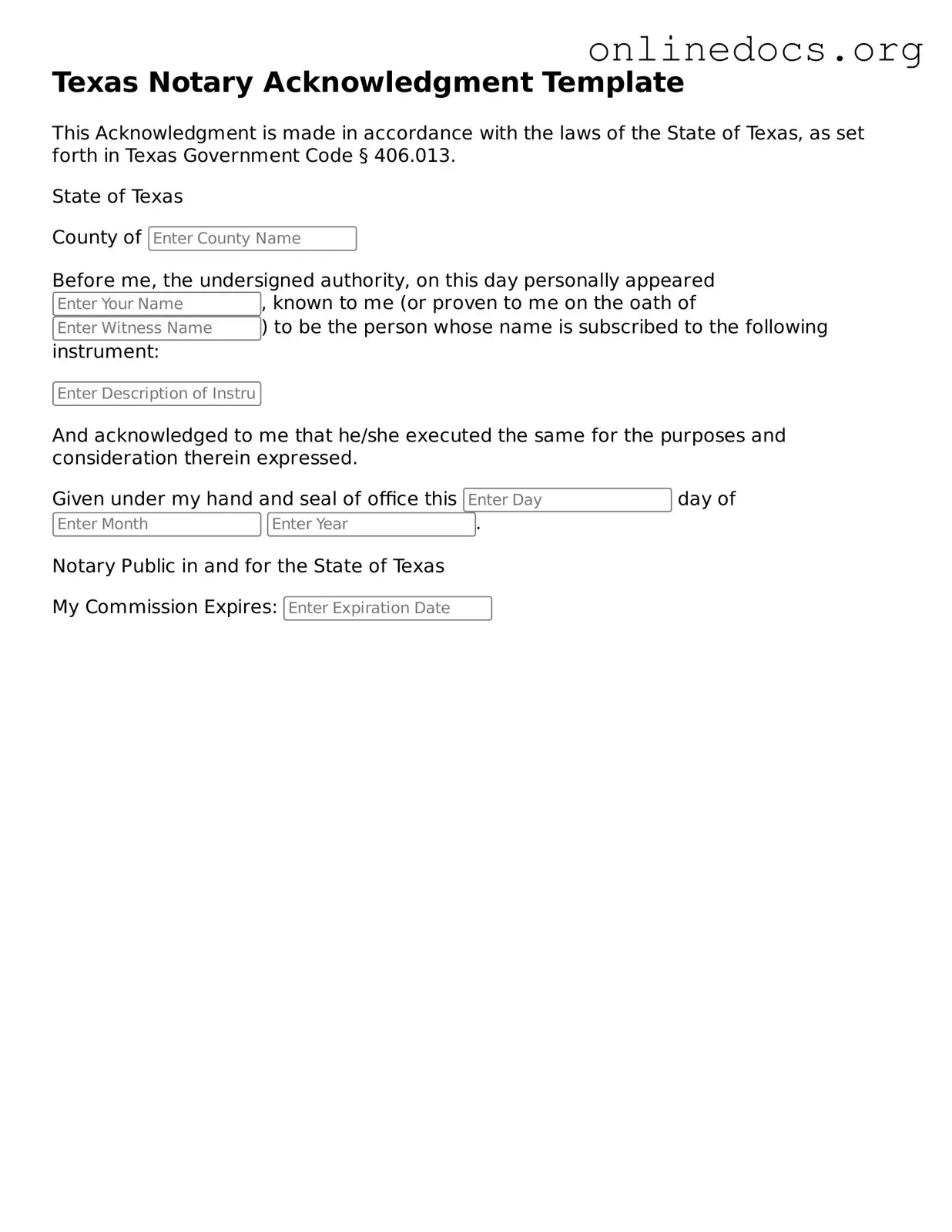The Texas Notary Acknowledgment form shares similarities with the Affidavit. An affidavit is a written statement confirmed by oath or affirmation, often used as evidence in court. Like the Notary Acknowledgment, it requires a notary public to witness the signing and verify the identity of the signer. Both documents serve to authenticate the intent and truthfulness of the statements made within them, providing a level of legal assurance to those relying on the information presented.
Another document that resembles the Texas Notary Acknowledgment is the Power of Attorney. This legal document allows one person to act on behalf of another in legal or financial matters. Similar to the Notary Acknowledgment, a Power of Attorney must be notarized to ensure that the person granting authority is doing so willingly and understands the implications. The notary's role in both documents is crucial for validating the identity of the signers and the legitimacy of the document itself.
For those navigating employment-related processes, it is crucial to have the right documentation, such as the California Employment Verification form. By confirming an individual's employment status, this form, often essential for applications and agreements, ensures that both employees and employers can provide proof as needed. To find a detailed template and further assistance, you can visit legalformspdf.com.
The Deed is also comparable to the Texas Notary Acknowledgment form. A deed is used to transfer ownership of real property and must be signed by the grantor. To be legally effective, the signature on the deed must be acknowledged before a notary public. This process ensures that the grantor is indeed the rightful owner and is voluntarily transferring the property, similar to how the Notary Acknowledgment confirms the authenticity of a signature on various documents.
The Certification of Trust shares characteristics with the Texas Notary Acknowledgment as well. This document provides evidence of the existence of a trust and outlines its terms. When a Certification of Trust is signed, it often requires notarization to verify the identities of the trustees and to confirm that the document accurately reflects the trust's intentions. Both documents rely on the notary's verification to enhance their legal standing and to protect the interests of all parties involved.
Lastly, the Bill of Sale is another document that aligns with the Texas Notary Acknowledgment. A Bill of Sale is used to transfer ownership of personal property from one party to another. While not always required, having a Bill of Sale notarized can add an extra layer of protection, ensuring that both parties are who they claim to be and that the transaction is legitimate. Just as with the Notary Acknowledgment, the notary's role is to affirm the identities and intentions of the signers, making the transaction more secure.
